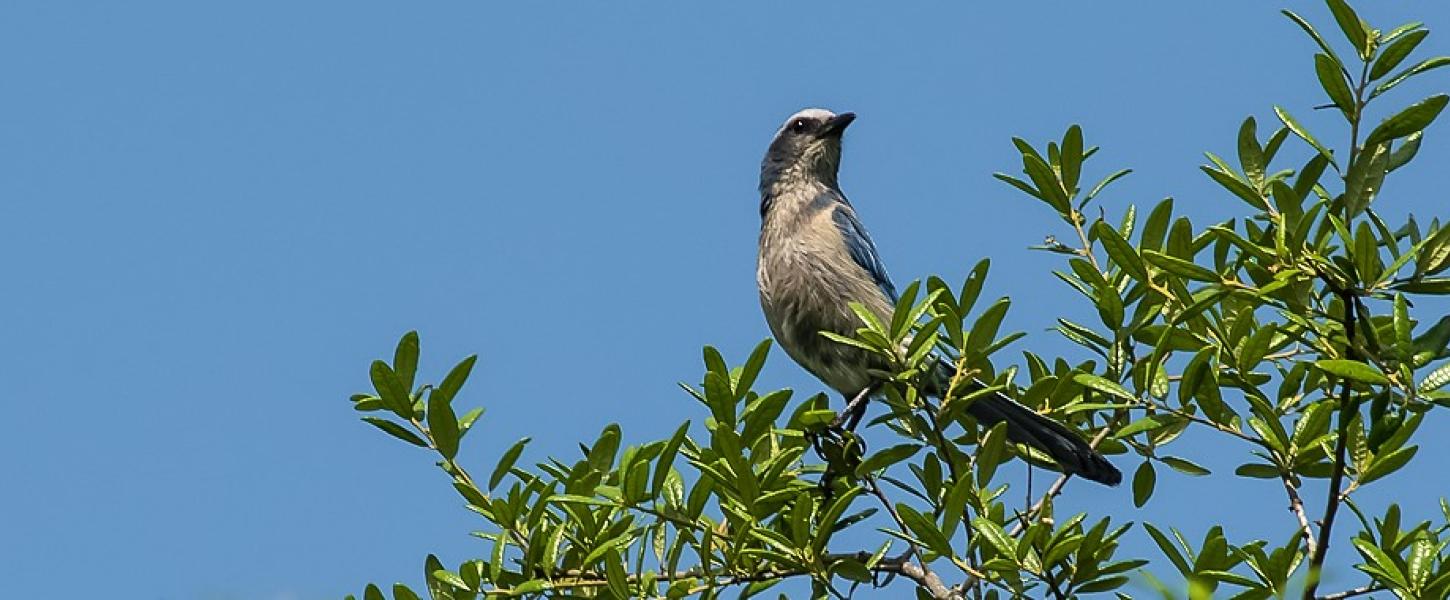
Birding at Blue Spring

The Florida scrub jay, a special species found at Blue Spring
Blue Spring State Park is known mainly for being the winter home of the Florida manatee, but did you know we have another special species that can be found here year round? That is the Florida scrub jay, the only bird species unique to Florida.
In 1987, this bird was put on the federal threatened species list and by 1993 the population declined by almost 90%. This highly intelligent bird can get approximately 12 inches long, and wears its blue feathers on its tail, wings, head and collar along with gray on its back and belly. They love Blue Spring for our low-growing oak scrub and scrubby flatwoods. They can be viewed around the edges of the scrub where there are open, bare sandy areas.

Prescribed fire is one essential way park staff maintains the scrub jay habitat. Some areas need to be burned every five to 20 years to keep scrub vegetation at preferred heights. If the vegetation becomes too dense or tall, scrub jays will no longer want to use those areas.
Florida scrub jays are curious birds that eat a variety of animals and plants. These bold birds will hop along the ground looking for insects, acorns and berries.
The Florida scrub jay pairs will mate for life and their mating season is from March to May. They are known as cooperative breeders because individual birds who do not mate in a given season are known to assist their parents or siblings in raising their young.
If you are interested in getting a glimpse of this awesome species, as well as hairy woodpeckers and Bachman's sparrows, take a hike along our Pine Island Trail. This trail is ideal for songbird migrants in the spring and fall. The Pine Island Trail winds for four miles through sand pine scrub, pine flatwoods and freshwater marsh. These different habitats attract a diverse amount of bird species.
Blue Spring is a Great Florida Birding Trail site with 142 species observed inside the park, including highlights such as chestnut-sided warbler, Blackburnian warbler, Mississippi kite and merlin.
Check our events section for upcoming ranger-guided walks.